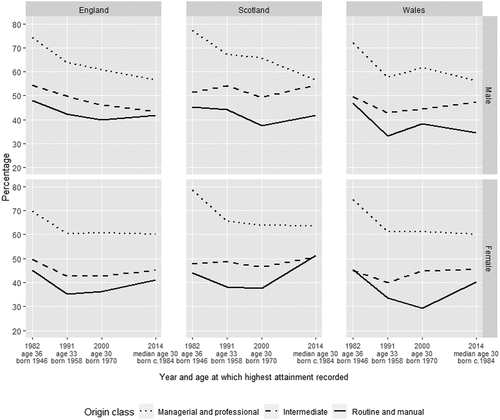Figures & data
Table 1. Sources of data.
Table 2. Highest educational attainment at age c.30, by survey and nation.
Table 3. Social class of upbringing, by survey and nation.
Table 4. Social class of destination at age c.30, by survey and nation.
Figure 1. Attainment of full secondary education or better, by sex, class, year and nation.
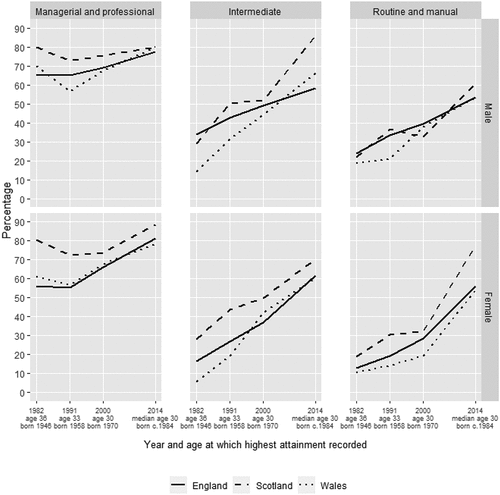
Figure 2. Education score (common metric), by sex, class, year and nation.
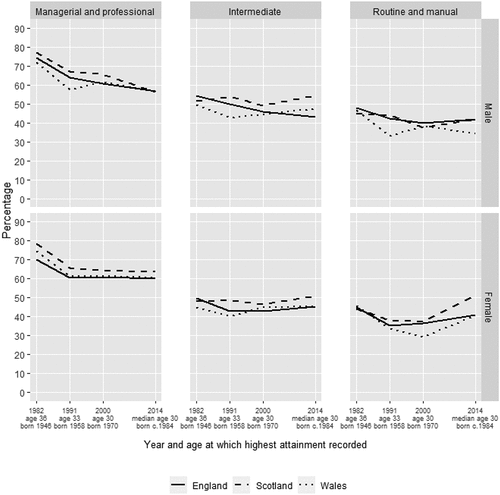
Figure 3. Education score (nationally specific metrics), by sex, class, year and nation.
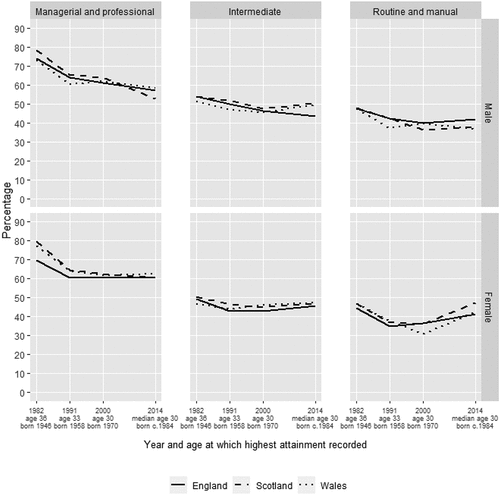
Figure 4. Attainment of full secondary education or better, by sex, nation, year and class.

Figure 5. Attainment of full secondary education or better, by sex, year and class: Scotland only.

Figure 7. Education score (common metric), by sex, year and class: Scotland only.
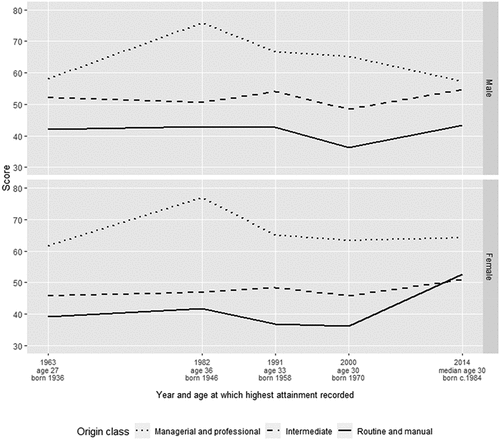
Figure 8. Entry to managerial and professional class, by sex, class, year and nation:people who attained full secondary education or better.
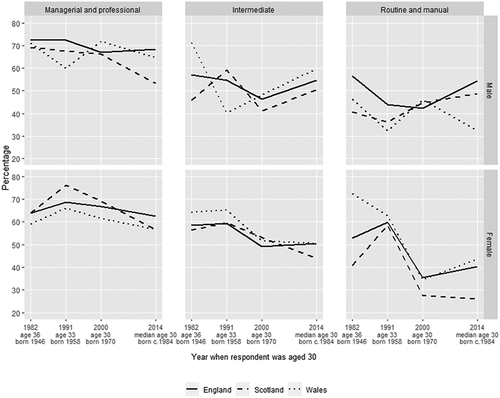
Figure 9. Entry to managerial and professional class, by sex, class, year and nation:people who attained university degree.
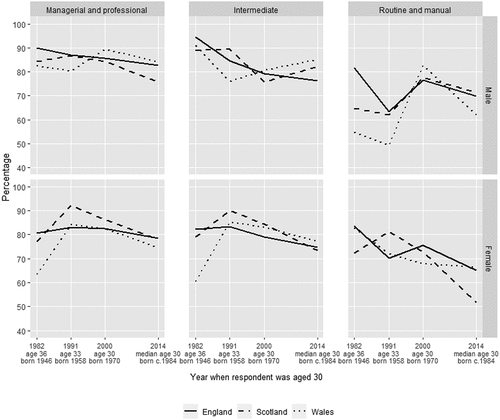
Figure 10. Entry to managerial and professional class, by sex, class, year and nation:people at upper quartile of common metric of relative attainment.


